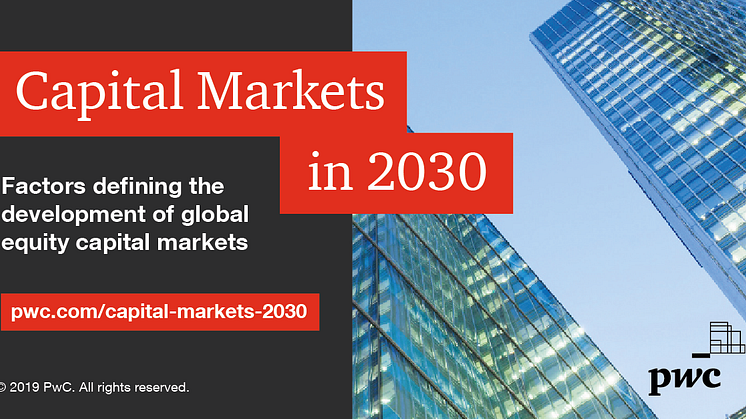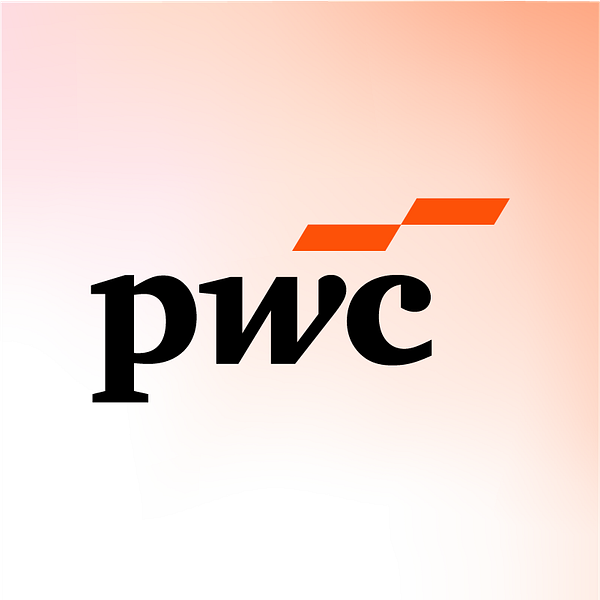
Press release -
New York, London and Hong Kong expected to remain as top listing destinations in 2030, Singapore on the rise
| Date | 11 March 2019 |
| Contact | Mike Davies, global communications , PwC Tel: +44 7803 974136 Email: mike.davies@pwc.com Natalie Choo, Singapore communications, PwC Tel: +65 8722 7545 Email: natalie.yl.choo@sg.pwc.com |
| Follow/ retweet |
@PwC_Singapore |
- Exchanges in developed markets are proving to be resilient, benefitting from their recognised liquidity and stability
- Emerging markets in Southeast Asia driving issuers’ interest to Singapore and Australia
- Companies from China and India expected to dominate issuance in 2030, although growth of exchanges in emerging markets has been more subdued than anticipated
- Seventy per cent of respondents expect businesses to consider going public at some stage, notwithstanding public equity becoming a less important source of funding
- The range of financing alternatives has increased, with private equity being the preferred option
Singapore, 11th March 2019: The top four exchanges that issuers will consider beyond their home exchange in 2030 are the New York Stock Exchange (NYSE) (37%), Nasdaq (26%), London Stock Exchange (LSE) (24%), and Hong Kong Stock Exchange (24%), according to Capital Markets in 2030, new research by The Economist Intelligence Unit on behalf of PwC.
Spurred on by increasing focus on the Southeast Asian market, apart from their own exchanges, more issuers would consider listing on the Singapore Exchange (SGX) in 2030 with 15% interest. This would place the SGX at ninth place, just behind the Asian exchanges in Hong Kong, India, Shanghai and Australia.
Tham Tuck Seng, Capital Markets Leader at PwC Singapore says:
“We expect that SGX’s reputation as the most international exchange will remain intact given its pro-business approach. Together with the country’s stable political landscape, transparent regulatory environment and the relatively low volatility of the Singapore Dollar, it gives companies good reasons to consider listing on the SGX.”
The survey also forecasts the growing importance of the SGX and the Australian Securities Exchange (ASX) as the regional hubs for Southeast Asia.
The survey asked nearly 400 executives at companies from across the globe for their views on the factors that are defining the development of global equity capital markets, following up from a 2011 report.
This marks a change from 2011 when respondents predicted that Shanghai market would be the leading exchange by 2025, followed by NYSE, the Indian exchanges and Brazil’s Bovespa.
Ross Hunter, PwC Global IPO Centre leader, comments:
“Excessive optimism about emerging markets has been tempered by political and market realities. Expectations are now for a more closely run race between developed and emerging markets exchanges.”
Looking at the IPO pipeline, China (55%) is the country predicted to generate the most new issuers by 2030 followed by India (45%), the US (41%), Brazil (21%) and, despite Brexit concerns, the UK (18%). China and India also led in this category in our previous survey. Both have been taking steps to develop their equity capital markets, with a number of recent initiatives in China in particular. Singapore comes in just two spots behind the UK at seventh place (12%).
Tham Tuck Seng, Capital Markets Leader at PwC Singapore says:
“Increasing efforts by the regional exchanges to win over large technology companies or new economy companies will continue to intensify. We would, however, expect the recent market and regulatory developments can generate more IPO interest in SGX.
“Examples of such efforts by the SGX include the introduction of the dual-class shares framework, partnerships with Tel-Aviv Stock Exchange, NASDAQ, various investment relations and settlements of securities programmes.”
Liquidity remains the top priority (selected as most important by 49% of respondents) when choosing a listing location. There is also an increase in the focus on valuations (32%) and concern about the costs of listing (29%).
PwC anticipates that technology will continue to be a significant driver in the future of public companies. Increasing efforts by leading financial centres to win over technology and ‘new economy’ companies will continue to intensify competition between the New York and China (mainland China and Hong Kong) exchanges in particular.
It is clear that in recent years companies’ options for raising capital have increased. Some 76% of respondents believe that there are now more choices of both public and private financing routes in both developed and emerging markets.
Although 70% of respondents believe a public listing is becoming a less important source of funding globally, a similar proportion of survey respondents think it would be advantageous for successful companies to go public over some point in their life cycle. The most attractive private funding option, selected by 55% of respondents, is private equity.
Ross states: “Private equity has been significantly influencing capital markets in recent years, leading to fewer, larger, later IPOs - particularly with technology and ‘new economy’ companies.”
Ultimately, therefore, rather than simply being seen as rivals to public equity markets, companies increasingly consider private markets to be complementary sources of capital that they can tap into when appropriate.
Ross Hunter concludes:
“For companies, the choice of credible exchanges for public listings, as well as the range of private funding options, will continue to expand, adding to the alternatives when they seek to raise capital.”
Ends.
Notes to editors.
For a copy of Capital Markets in 2030 go to www.pwc.com/capital-markets-2030
Related links
Topics
Categories
About PwC
At PwC, our purpose is to build trust in society and solve important problems. We’re a network of firms in 158 countries with over 250,000 people who are committed to delivering quality in assurance, advisory and tax services. Find out more and tell us what matters to you by visiting us at www.pwc.com/sg.
PwC refers to the PwC network and/or one or more of its member firms, each of which is a separate legal entity. Please see www.pwc.com/structure for further details.
© 2019 PwC. All rights reserved


